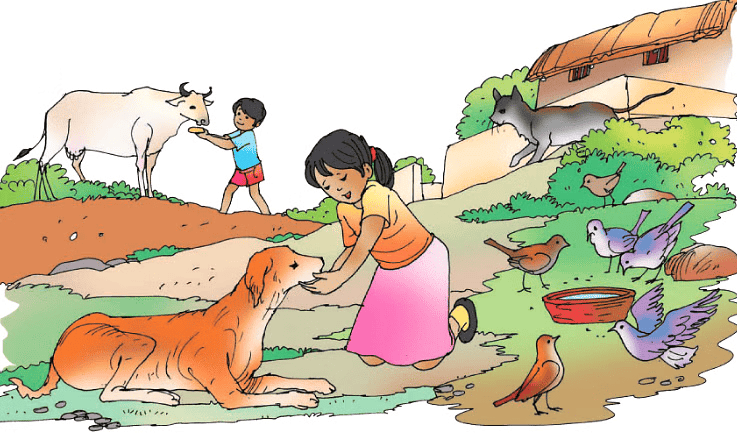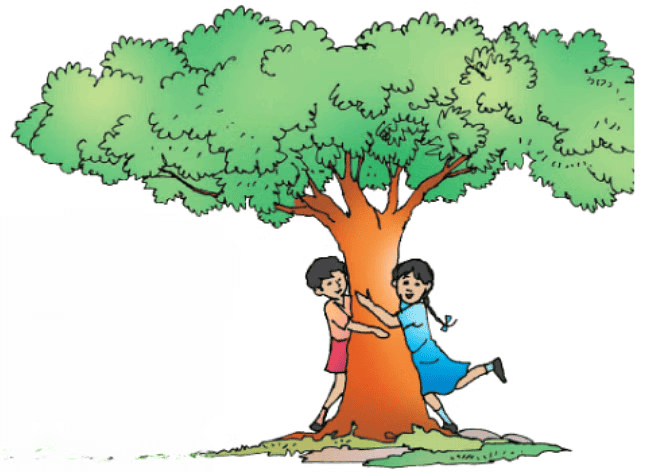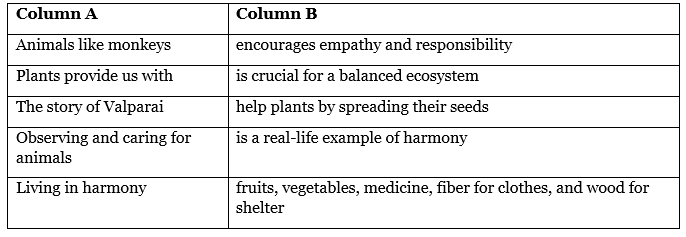Worksheet Solutions: Living in Harmony | Worksheets with solutions for Class 3 PDF Download
| Table of contents |

|
| Fill in the Blanks |

|
| True or False |

|
| One-Word Answer Type Questions |

|
| Multiple Choice Questions (MCQs) |

|
| Match the Following |

|
Fill in the Blanks
Q1: _______ eat mangoes and help plants by dispersing seeds.
Ans: Monkeys
Monkeys eat mangoes and help plants by dispersing seeds.
Q2: From plants, we get _______ that are used to make medicines.
Ans: Herbs
From plants, we get herbs that are used to make medicines.
Q3: Animals help make the soil _______ by enriching it through their waste.
Ans: Fertile
Animals help make the soil fertile by enriching it through their waste.
Q4: Plants provide us with _______ for building houses.
Ans: Wood
Plants provide us with wood for building houses.
Q5: _______ provides us with both food and shelter.
Ans: Nature
Nature provides us with both food and shelter. 
True or False
Q1: Plants help animals by providing food and shelter.
Ans: True
Plants help animals by providing food and shelter.
Q2: Humans do not need to care for animals and plants.
Ans: False
Humans need to care for both animals and plants.
Q3: Seeds can grow into new plants without the help of animals.
Ans: False
Animals help plants by dispersing seeds, allowing new plants to grow.
Q4: Plants only give us fruits and vegetables.
Ans: False
Plants provide us with fruits, vegetables, medicines, fibres, and wood.
Q5: Talking to plants can make you feel better.
Ans: True
Talking to plants can make you feel better and calm. 
One-Word Answer Type Questions
Q1: Which material do plants give us for making clothes?
Ans: Fibre
Q2: What do animals make the soil through their waste?
Ans: Fertile
Q3: What do cows, buffaloes, and goats provide us with?
Ans: Milk
Q4: What helps new plants grow after animals eat fruits?
Ans: Seeds
Q5: Who did Shambhu learn important lessons from in the story?
Ans: Father
Multiple Choice Questions (MCQs)
Q1: What do humans get from plants besides food?
(a) Fibre
(b) Medicine
(c) Wood
(d) All of the above
Ans: (d) All of the above
Humans get fibre, medicine, and wood from plants.
Q2: Which of the following animals helps plants by dispersing seeds?
(a) Birds
(b) Monkeys
(c) Frogs
(d) Ants
Ans: (b) Monkeys
Monkeys help plants by dispersing seeds.
Q3: What do animals do that helps plants grow?
(a) Eat leaves
(b) Disperse seeds
(c) Build nests
(d) Rest in trees
Ans: (b) Disperse seeds
Animals disperse seeds, helping plants grow.
Q4: Which of these helps improve the fertility of the soil?
(a) Fruits
(b) Seeds
(c) Animal waste
(d) Bark
Ans: (c) Animal waste
Animal waste helps improve soil fertility.
Q5: Who taught Shambhu about the relationship between plants and animals?
(a) His teacher
(b) His friend
(c) His father
(d) His mother
Ans: (c) His father
Shambhu's father taught him about the relationship between plants and animals. 
Match the Following

Ans:
Animals like monkeys - help plants by spreading mango's seeds
Plants provide us - fruits, vegetables, medicine, fiber for clothes, and wood for shelter
The story of Valparai - is a real-life example of harmony
Observing and caring for animals - encourages empathy and responsibility
Living in harmony - is crucial for a balanced ecosystem
FAQs on Worksheet Solutions: Living in Harmony - Worksheets with solutions for Class 3
| 1. What are the main themes of living in harmony? |  |
| 2. How can we promote harmony in our daily lives? |  |
| 3. Why is it important to live in harmony with others? |  |
| 4. What activities can help children learn about living in harmony? |  |
| 5. How can schools encourage students to live in harmony? |  |















